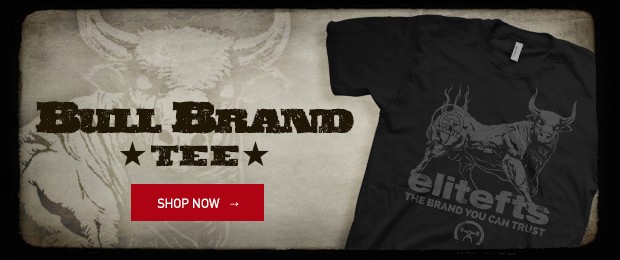
Ivan the Terrible. This was my nickname that one of my earliest clients gave me, back in 2010. His name was Matt. He was 40 and had just finished P90X, which was at the height of its popularity at the time.
Matt wanted to take his workouts to the “next level”, and he had seen me training in the gym. At the time, I had just discovered pre-workout and ephedra, and workouts were an ungodly Frankenstein’s monster of deadlifts, ring work, endless lunges, bodyweight exercises, and whatever else I could think of to tire myself out. I was still dancing during this time, and I made the common error that many athletes make; if I can make my workouts way harder than six hours a day of training, I’ll be super fit for training!
Sadly as I later learned, this is NOT how the body works in regards to adaptation and fatigue and performance, but what did I know? I was a rookie trainer and I thought I had it all figured out.
RELATED: 5 Leadership Mistakes in Personal Training
Back to the story. Matt approached me one day telling me he wanted me to train him. As I was only two months into my career, I was ecstatic. He ended up getting 20 sessions, which was the biggest packet of sessions I had sold to that point. This left me elated and boosted my confidence that personal training was worth sticking with (at the time, I was debating whether to continue with it post-graduation).
To clarify, the nickname was one of endearment. The workouts I did with Matt were disgustingly, stupidly hard, but he loved them. And for whatever reason, he thought I was Russian when he met me. Hence the nickname.
Looking back retrospectively, the experience had far more lessons than I ever would have imagined. Beyond the personal training perspective, the story has some very prescient business lessons on serving your customer, whether the product (training) quality is as important as you think and how relationship building tends to matter more than anything else.
Looking back on those sessions, I could certainly say I did a lot of things wrong, but I also did quite a few things right as well. Things that I know I’ve forgotten at times or have gotten away from only to return to later.
1. If something is worth doing, it’s worth overdoing.
The workouts I did with Matt were next level ridiculous. Here is an example of one:
A. Barbell High-Pulls
superset with
B. Ring Pushups (Feet Elevated)
C. Inverted Rows
superset with
D. Box Jumps
E. Bench Press (Up to Heavy Set of 3)
superset with
F. Stiff Arm Pulldowns
G. Dips
superset with
H. Nordic Leg Curls
I. DB Renegade rows
Do three to four sets of everything to failure, and either go heavy or do high reps.
What was this workout for? I have no idea. I guess it is a total body on paper, but it's a medley of stuff all thrown together.
Reasonable? Not at all.
Fun as hell if you want to kick your own ass and be exhausted and really sore the next day?
ABSOLUTELY.
What made the training with Matt so successful? Self-belief. His enthusiasm for the training was at an extreme high. He was excited to train every single week he came in, and the more of a challenge it was, the more he enjoyed it. Had I honestly trained him smarter, I know for a fact he would have been bored.
Hence, I made every session a hellraiser session that was designed to tire him out until he was ready to pass out. And no kidding, he attacked ALL of them. And actually got stronger and more muscular in the process.
Survivorship bias? No doubt, but when you believe in what you are doing, and what you are doing is insane, AND you come out the other side, you are probably going to be tougher for it.
2. Your product is whatever the client BELIEVES it is.
Trainers get “high-minded” in what they offer. The current science and evidence trend has deluded people in believing they are faux scientists or semi-medical professionals, and has led to a lot of virtue signaling over how they are “not like other trainers.”
Guess what? No one fucking cares. The product that YOU think you offer is not your product. It is what the client, and the market at large, perceives it to be. By Matt's perception, my product was that I trained people harder than any other trainer at the gym. He saw how I trained and he assumed that is how I trained everyone else.
Was this true? Not according to me, but it didn’t matter. That is what sold him, and that is what he wanted. And ironically, in the process of training him, I got a reputation for training people harder than any other trainer, simply from people watching our training sessions.
And that brought me A LOT of new business. Rather than try to argue about this, I simply went with it and made sure I didn’t injure anybody. To my delight, I had a steady stream of very enthused clients who all were hard workers, and wanted a trainer that would fulfill their desire for beat-me-into-the-ground training sessions. This also had another lesson.
3. If a client/customer loves the product, do not F%CK with the product.
A wheel is a wheel is a wheel. How many companies have successfully innovated and created a flagship product, only to lose customers and loyalty when they needlessly redesign it? Too many to count.
Your product should improve over time, but those improvements must meet the expectation that your customers have for it. Your training should improve over time, but your training should be exceeding the expectations that your clients have for it.
I never changed my “branding” from the first gym I worked at. I delivered the most punishing workouts at every gym I've ever worked at. I recognized that there will always be people that want a hardline trainer, and so long as I can deliver results, I have no problem being that person. Is this all that I do? No, my talent stack has grown considerably since that time. And I already know that the criticism is some canned line of:
“Anyone can make you tired, but only a great trainer/coach/life coach/science-and-evidence-wanna-be-coach/programmer can improve you.”
MORE: 100 Hardcore Reps, Health Nazis, and Back Crushers
That's nice. But guess what, PEOPLE ARE PAYING YOU FOR A WORKOUT. AND THEY USUALLY LIKE IT WHEN IT'S HARD.
Rather than argue against this, fulfill the desire and deliver results on top of it. Now they got what they wanted, and you delivered what they needed.
4. Passion cannot be faked.
Training Matt was more than just a good training session. He became a good friend, and we got along like absolute bros. I didn’t consider how much this would affect perception, but the feedback I got later on from clients made me realize it.
“You two looked like you had so much fun training together.”
“I could tell how INTO the session you were.”
“You seem like you really love this.”
When people watch a training session, they are not looking at the exercises. They are watching how you and the client interact. Unless the client looks grossly awkward or in pain while doing a movement, the average person’s assessment has nothing to do with your technical skill, and everything to do with your interpersonal skills.
You cannot bullshit having a passion for doing something. Trainer A could have the world’s most smartly and right and science and evidency workout plan, but if they looked bored while training someone through it, by general population observation they are a shit trainer.
Trainer B may have their client doing an utter shitshow of a workout, but if Trainer B looks happy, the client looks happy, and they both are having fun...
Trainer B's Value > Trainer A's Value
Passion trumps everything, even when it reasonably shouldn’t.
In Conclusion
The creation of value is as much a game of perception as it is of intention. The customer is the ultimate determinant of your product and what it’s about. If you can deliver results on expectation, you will do well. And in the end, the person the has passion for all the above will likely beat the person that does not, regardless of whether the latter beats the former on skill-set.











